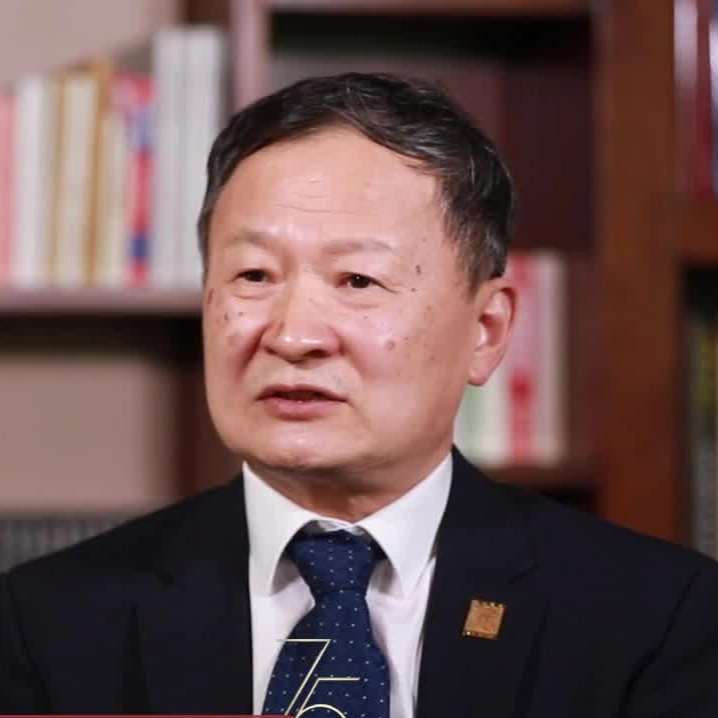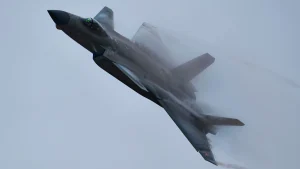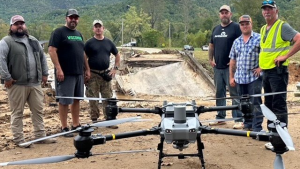China’s Drone Tech Breakthrough Scared the Chinese Army

Two weeks ago, a new standard feature was introduced to Chinese tanks, signaling a significant advancement in China’s drone technology that even the Chinese military itself is scared of it.
This new addition was showcased on China’s state television on October 6. During a military drill in Qinghai province, all the Type 15 light tanks in the footage were outfitted with anti-drone cope cages. While the cope cage itself isn’t particularly advanced technology, its standardization on Chinese tanks, two years after the outbreak of the Russia-Ukraine conflict is highly noteworthy.

After the Russia-Ukraine conflict broke out in 2022, drones have brought about revolutionary changes on the battlefield. Capable of carrying armor-piercing warheads, they attack tanks from their most vulnerable angle—the top. Some have even evolved to use fiber-optic cables for remote control, making them nearly immune to electromagnetic interference. Consequently, we saw similar cope cages being added to both Russian tanks and NATO-supplied tanks in Ukraine.
 Ukrainian M1 Abrams Tanks Get Elaborate Cope Cages. Source: The War Zone
Ukrainian M1 Abrams Tanks Get Elaborate Cope Cages. Source: The War Zone
So, why didn’t Chinese tanks adopt cope cages earlier? That’s because China was confident in its ability to shoot down such drones.
On the battlefield in Ukraine, drones pose a significant threat to tanks primarily because the air defense (AA) systems in place were originally designed to counter helicopters and jets. These systems—automated anti-aircraft guns and missiles—rely on radar or heat signatures to target incoming threats. However, radar struggles to detect drones, which are small, slow-moving, and fly at low altitudes. By the time a drone’s heat signature is strong enough to be detected, it is often already too close for interception. As a result, weapons that are highly effective at taking down aircraft like the A-10 or Su-25 often struggle with inexpensive drones.
As the world’s largest drone manufacturer, China has a deep understanding of their vulnerabilities. Long before the Russia-Ukraine conflict, China had already developed specialized weapons to counter drones—which is the “Silent Hunter.”
The Silent Hunter is a vehicle-mounted laser weapon developed by China Poly Technology, first deployed during the 2016 G20 summit in Hangzhou. In 2017, Saudi Arabia acquired the system, and in 2022, it successfully shot down 13 drones during an attack by Yemen Houthi forces, protecting vital oil production facilities.
 The Silent Hunter laser system by Poly Technologies. 2019. IDEX 2019 exhibition
The Silent Hunter laser system by Poly Technologies. 2019. IDEX 2019 exhibition
According to information displayed at The International Defence Exhibition and Conference (IDEX) held in Abu Dhabi, the Silent Hunter has a maximum range of 4 kilometers and can burn through 5mm-thick steel plates at 1,000 meters—easily handling drones made mostly of plastic. The system utilizes multiple targeting methods, including electro-optical sensors and S-band 3D TWA low-altitude surveillance radar. Silent Hunter can engage a new target every six seconds, since it uses lasers, there’s no risk of missing or delay from ammunition travel.
Laser weapons are not exclusive to China. The U.S. defense company Lockheed Martin has developed a similar system called LaWS (AN/SEQ-3). However, due to unresolved miniaturization challenges, this system can only be mounted on naval ships, limiting its ability to provide cover for ground forces. Chinese engineers, on the other hand, have successfully overcome this limitation.
For the Chinese Army, which previously held a technological edge, drones were not seen as a serious threat. But just last month, a drone display in China reintroduced drones as a pivotal factor in this technological arms race.
On September 26, a drone show was held in Shenzhen to celebrate China’s National Day. A total of 10,197 drones took to the air simultaneously, breaking the Guinness World Record for ” largest aerial image formed by multirotors / drones. ”
More impressively, the event also set another record for “most multirotors / drones airborne simultaneously from a single computer (outdoors)” In the hands of Chinese engineers, one laptop can now precisely control more than 10,000 drones at once.
Imagine the potential if these drones were equipped with something more than just colored lights.


According to data released by the Civil Aviation Administration of China (CAAC), by the end of 2023, China have over 1.26 million drones. In comparison, according to Forbes in 2020, there are roughly 73,000 tanks worldwide. This means that, in theory, if Chinese drone engineers were given just eight laptops, they could potentially neutralize all the tanks in the world. Even if all drone production in China were to cease today, the existing drone fleet could achieve this task 17 times over.
Therefore, as of October this year, we see the changes on Chinese tanks. This suggests that Chinese tank engineers may have shifted away from the ambitious goal of intercepting all drones. Instead, they are opting for a simpler solution—enhancing the safety of crews with these cope cages, at least until laser weapons are more widely deployed in the military. In Ukraine, actual combat records had proven it’s better than nothing.

Some may wonder why active defense systems aren’t being used to solve this issue. The main battle tanks of the United States, Germany, and the United Kingdom are equipped with what is claimed to be one of the world’s most advanced systems—the Trophy, the same system used on Israel’s Merkava tanks.
According to the official website of its manufacturer, Rafael Advanced Defense Systems Ltd., Trophy provides 360-degree protection and boasts a 90% success rate in intercepting anti-tank weapons like RPGs.
However, in both Gaza and Ukraine, we see that NATO tanks are still being retrofitted with cope cages. If you follow videos posted by Palestinian war correspondents, you may start to question just how much credibility there is in the claims made by Israeli manufacturers.
 Israeli Merkava tank equipped with cope cage in Palestine
Israeli Merkava tank equipped with cope cage in Palestine
Interestingly, Bloomberg reported on July 7 that the Pentagon is seeking to engage in a drone showdown with China in the Taiwan Strait. In response, Chinese strategist and retired Air Force Colonel, Prof. Wang Xiangsui, noted, after the Houthis successfully used a drone to hit a U.S. warship, that drones not only change the tools of war but also the underlying logic of warfare:
These drones, originally designed for civilian aerial photography, are inexpensive and even considered technologically backward compared to the U.S. military’s overall combat system. However, modern information technology have enhanced their capability as long-range attack weapons. In the future, they may even pose a threat to aircraft carriers. While they may not be able to sink or heavily damage carriers, they can disrupt fleet air defenses cost-effectively and create opportunities to interfere with deck operations.
This development means that drones enable developing countries to bridge the generation gap in military technology, rendering some superpowers increasingly vulnerable to these low-cost, guerrilla-style tactics. It makes conventional military might less decisive and counterinsurgency warfare more costly. Faced with modern guerrillas using innovative technologies, superpowers will be forced to confront the limits of military force.
Military power is effective, but it requires substantial resources and clear boundaries for use. Given the U.S.’s recent underinvestment and lack of clarity on its strategic boundaries, it risks facing more significant challenges unless the Pentagon adjusts its global strategy.
Editor: Charriot Zhai
https://www.guinnessworldrecords.com/news/commercial/2024/10/a-dazzling-display-chinas-record-breaking-drone-spectacle-with-over-10000-drones
https://www.forbes.com/sites/davidaxe/2020/06/16/there-are-73000-tanks-in-the-world-which-are-the-best/
https://www.gov.cn/yaowen/liebiao/202403/content_6942571.htm
https://www.rafael.co.il/system/trophy-aps/
https://www.bloomberg.com/opinion/articles/2024-07-07/us-drones-will-create-a-hellscape-in-the-taiwan-strait
https://militaryleak.com/2022/10/26/saudi-arabia-deploys-silent-hunter-laser-air-defense-systems-against-houthi-drones/




